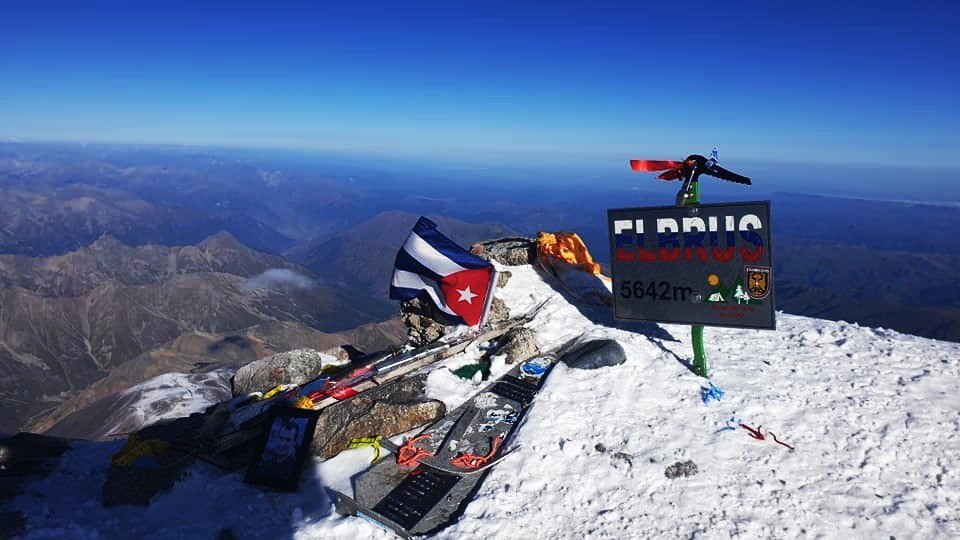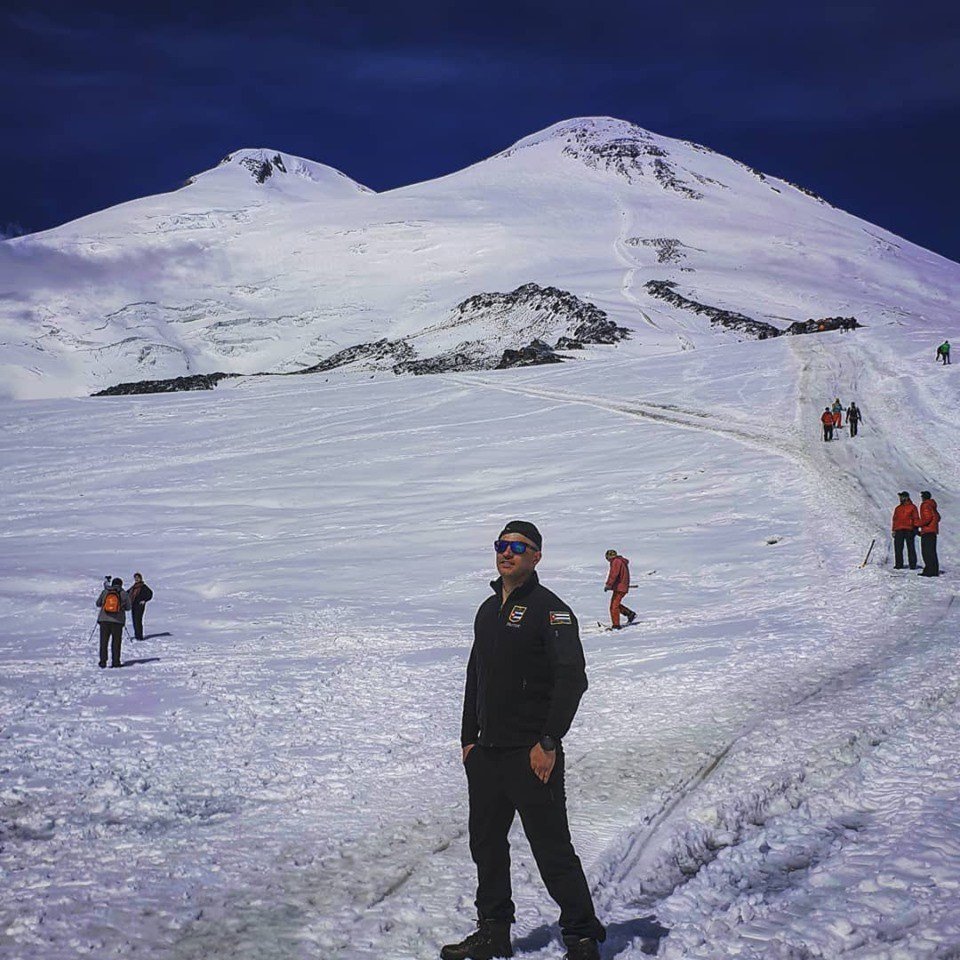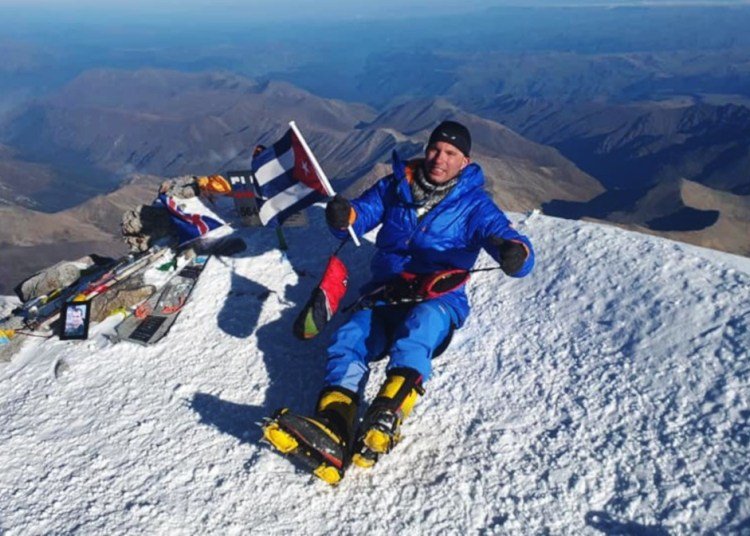Yandy Núñez has just made a grand entrance to the history of world mountaineering. In three days he became the first Cuban to climb the 5,642 meters to the top of Mount Elbrus, the highest mountain in Europe located in southern Russia near the border with Georgia. There are no records, at least known, that another Cuban has been able to perform the feat. Which is why this Havanan recalls that he exploded with joy when he managed to climb to Europe’s rooftop.
Yandy Núñez emigrated from Cuba in 2015. He currently lives in Reykjavik, Iceland, where he learned to be a guide on glacier exploration routes.
The young 31-year-old Havanan, born in Calabazar, is at the Russian Mineralnye Vody airport while we chat via WhatsApp. The mountaineer speaks in gusts, still shaken by the adrenaline rush that runs through his body after touching the European sky. He checks his ticket and sets off for Moscow. In the air he finishes answering the questions about that feat he keeps in his heart as a medal won in a life or death battle.

Why did you decide to face the goal of climbing Mount Elbrus?
Because for me it is a great pride to take the Cuban flag to the highest points of the earth. Cuba always has to shine for the Cubans who love it. And I love Cuba, the Cuban people.
What kind of preparation does this complex challenge face?
It takes a strong mental and physical preparation, and knowledge about rescue and self-rescue techniques. Having experience with crampons walking on glacier ice, the use of the ice ax. Have first aid knowledge. Everything is important.
I enlisted in the ranks of the Icelandic rescue team and finished the first year. I didn’t continue because of the language. I carried out 57 mountain climbs throughout Iceland with a guide company for 6 months including the 2 highest: Hvannadalshnjúkur, located 2,110 meters above the largest glacier in all of Europe and the other was Birnudalstindur. I also finished a Hard Ice 1 glacier course. There I learned rescue techniques in glacial crevices and to serve as a guide on the glacier and to descend into the crevices of the glacier.

Did you ever think about abandoning the Elbrus climbing project?
Leave? No, never, forward march to the top.
How was the process of reaching the top?
We got up at 1:00 am for breakfast and were ready at 1:30 am. We went to catch the snow car at 1:50 am which took us up to 4,600 meters. Just me and the guide.
We started walking at 4,600 meters at 2:50 am and we didn’t stop at any time, only twice and it was only for 5 minutes. We reached the top a little before 8:00 am, exactly at 7:50 am.
What was the most complex part of the process?
The hardest part for me was the journey from the base camp at 3,800 meters to the end of Pastuhova Rock at 5,100 meters. Then the ascent continues being hard on the mountain. At around the 5,350 meters begins the part that borders the two summits. You are walking between the two summits of the Elbrus.
Then begins a part called The Saddle, inclined and dangerous at the same time; if you slip you fall and it can be fatal.
Passing that point you can at last almost see the top. Seeing the summit, you feel more anxiety and you run towards it full of emotion and joy. Almost crying and in a state of uptight excitement. I ran with all my strength toward it to crown the top with my flag.

I shot photos and made several videos and we went down to the base camp. I made the descent in two hours.
I arrived at the base camp of Elbrus (GaraBashi) at 10 in the morning. I went straight to eat something because I was super hungry. We had some soup and I went to the room to pick up all my things and take an express break.
I left the base camp at around 1:10 pm to Terskol, where I arrived at about 2:00 pm. I went to pick up the Ascension Certificate delivered by the president of the Terskol Mountaineering Federation. There I spent the night in a little hotel next to the Mountaineering Federation. The next day I left.
Are you sure you’re the first Cuban to reach the top of the Elbrus?
100% sure, no. But I consulted among groups of Cuban friends who practice mountaineering and everyone says that so far there has been no ascent by any Cuban to that peak. It will be necessary to investigate if some of the Cubans during the time of the Soviet Union made the ascent.
How would you describe the process for others who want to follow in your footsteps?
Have passion and challenges in life and feel what you are doing and take it as a unique experience. But my goals are not over yet. I have other projects. My goal is to place the Cuban flag on all the world’s mountain peaks. If I am able I will reach the most extreme and highest corner of this land. I can’t get out of my head the idea of going up to Aconcagua first and then to Everest.










